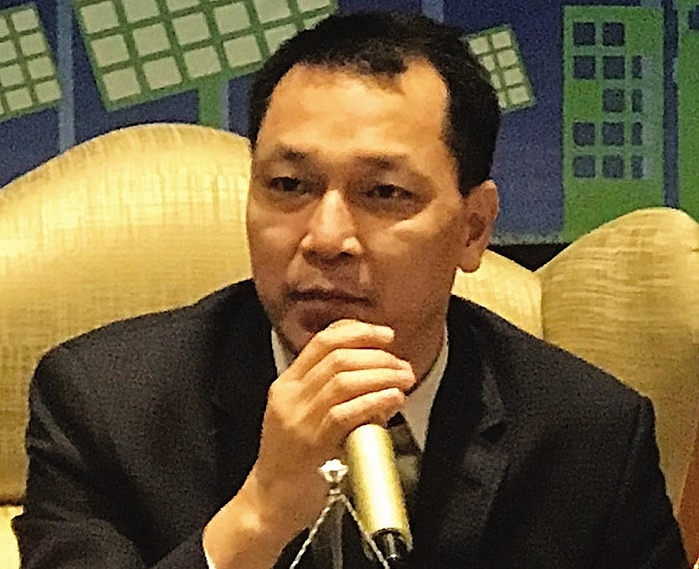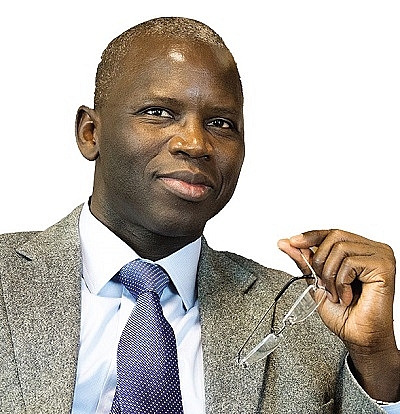Financing renewable energy development
 |
What is the overall objective of the Vietnam Energy Partnership Group?
The Vietnam Energy Partnership Group (VEPG) was established in June 2017 under an agreement between the Vietnamese government and development partners with the purpose of strengthening mutual partnerships and better aligning and co-ordinating external support to the Vietnamese energy sector. The VEPG is chaired by the Ministry of Industry and Trade (MoIT), and co-chaired by the Delegation of the European Union to Vietnam and the World Bank.
The overall objective of the VEPG is to work towards effective and efficient international support to sustainable energy development in Vietnam, in line with national laws and international agreements.
To deliver on this goal, the VEPG serves as a multi-level forum that supports policy and technical dialogue on energy development in the context of the UN’s Sustainable Development Goals and the Paris Agreement on climate change. It provides a platform to align external support with Vietnam’s energy and climate change strategies and action plans, international commitments, and private investments, thereby reinforcing coherence and effectiveness and avoiding the duplication of aid delivery. Furthermore, through information sharing and communications between national and international stakeholders, the VEPG contributes to enhancing learning and improving information-based decision making.
The VEPG focuses on five priority areas – renewable energy, energy efficiency, energy sector reform, energy access, and energy data and statistics. Through dedicated Technical Working Groups, it provides relevant, high-level input, and recommendations to inform the policy development and planning processes in the Vietnamese energy sector.
Vietnam will need around $150 billion to invest in developing the national electricity grid and resources by 2030. How will the country be able to mobilise such a significant volume of capital?
This is an important issue. In the revised Power Master Plan VII, Vietnam is poised to require $148 billion worth of investment in generation and distribution capacity through to 2030, as Vietnam needs to boost its installed capacity to 61 gigawatts (GW), 97GW, and 127.7GW by 2020, 2025, and 2030, respectively.
Among the necessary measures, firstly it should attract investment from the private sector into the energy sector. The question remains how the private sector can take a more integral part in power sector financing? Previously, only state-owned companies such as EVN, Petro Vietnam or Vinacomin made investments into the power sector.
Besides increasing the power supply, it needs to control demand and save energy. The policies and instruments including the incentive and sanctioning mechanisms should be customised to promote energy efficiency.
Vietnam sets the efficiency rate of 8-10 per cent of relative to the business-as-usual scenario of the total national commercial energy consumption for 2019-2030. The current two prevailing trends in the global energy industry are ensuring energy efficiency and conservation, and applying environmentally friendly technologies, looking to develop a low-carbon economy, green industries, and changing current production and consumption models for sustainable ones.
Vietnam has and will continue paying due heed to these measures in the future to achieve its targets of energy security and sustainable development.
How should the country balance coal-fired power and sustainable development?
Entirely rejecting coal-fired power stations would put the country’s energy security at risk, which cannot be allowed. Coal-fired plants will have little impact on the environment if they use good technologies. The country needs to develop all kinds of energy sources based on energy demand. The MoIT is seeking an optimal energy mix with diverse sources like hydropower, coal, gas, and renewables.
The long-term development orientations and strategies presented by the Vietnamese government for the power sector are closely attached to sustainable development, gearing towards modernisation to ensure power efficiency and conservation. This is also aimed to boost the development of new renewable energy sources combined with the implementation of the smart grid programme and competitive power market development.
| Ousmane Dione- Country director, World Bank in Vietnam
Vietnam has been a global success story in developing the power sector over the last few decades. This success has been a key contributor to the country’s socio-economic development, high and sustained economic growth, excellent performance in terms of poverty reduction, and the general wellbeing of its citizens. Two areas need to be highlighted on this success story - one is on rural electrification, and the other on power sector reform. On rural electrification, Vietnam’s access rate increased from 14 per cent in 1993 to over 99 per cent this year. Over that 25-year period, more than 14 million households or 60 million people have been connected to the grid. It is an incredible achievement. Needless to say, the financing requirements of the sector have been huge. Only since 2010, the sector invested about $80 billion in generation, transmission and distribution, and between now and 2030, another about $150 billion needs to be raised. Electricity consumption remains comparatively low by international standards. For example, per capita electricity consumption is currently about 1,700-kilowatt-hour a year, which is one-third of China or one-fifth of Australia. As the economy continues to grow strongly and as the Vietnamese become more affluent, electricity demand will continue to grow at about 8 per cent per year for the next decade. Electricity tariffs remain below full cost recovery levels and Electricity of Vietnam (EVN) does not receive direct subsidies from the Vietnamese government. Hence, let me stress that EVN and the sector have been highly effective and efficient using official development assistance (ODA) funds. Of course, this was only possible because of the leadership, dedication and technical capabilities of the Ministry of Industry and Trade (MoIT) and EVN management and its staff. On power sector reform, about a decade ago the government set out a clear roadmap for implementing competition and restructuring the sector. The motivation was to move from a vertically integrated monopolistic market structure to a fully competitive power market. The government needs to be complemented to continue to be fully committed to introduce a competitive power market. We are half-way through implementation, and by 2020 the wholesale electricity market will be fully operational. Experience with market liberalisation have been positive to date contributing to a well-run power sector public utility EVN, which is technically and operationally sound, but also allowing private sector participation in generation. I believe I can speak on behalf of all the development partner community that we have been privileged to contribute to that success story. International finance institutions and bilateral donors have provided technical assistance and financing over the last two decades to support the government on the rural electrification agenda, upgrade and expand vital transmission and distribution networks, develop public and private power generation projects and support the electricity and gas sector reform and restructuring agenda. The challenge is the future and the energy sector cannot rest on past achievements. It is widely known that the challenges the power sector needs to overcome over the next two decades are substantial to ensure it achieves its goals to provide sustainable, clean, affordable and reliable power supply to the people of Vietnam. One key question is how to meet future energy demand, while also complying with government’s objectives to reduce greenhouse gas emissions and meet its climate change targets. That of course refers to the contentious issue on the role of coal in the future energy mix. Another challenge is how to mobilise the large investment requirements, estimated at around $8 billion annually to meet fast growing power demand. EVN and the public sector cannot raise those funds and private sector, both domestic and international, will need to play a more prominent role in power sector financing. To tackle those two key challenges, the World Bank’s strategic energy engagement in Vietnam centers around two initiatives. First, on the energy transition - we support the government to identify and implement technically, financially and socially sound solutions to reduce the future use of coal, primarily for power generation. While there are no quick fixes or a silver bullet to tackle the coal challenge, we believe there are four central activities that need to be implemented in parallel by the government to reduce coal update for power generation: scaling up renewable, especially wind and solar; promoting natural gas and liquefied natural gas; increasing energy efficiency investments; and promoting regional power trade, especially with Laos and southern China. Second, the public sector and ODA financing will not be sufficient to meet the power sector’s huge investment requirements. Hence, under the bank’s Maximizing Finance for Development initiative, we are supporting the government to find and implement solutions to bring in more private and commercial financing for the energy sector. This initiative is particularly relevant in the context of Vietnam’s recent IBRD graduation and sovereign borrowing constraints due to the government’s debt ceiling policy. Three key pillars need to be tackled to mobilise more private and commercial finance in the power sector. These are launching a competitive IPP programme in power generation as part of Power Sector Development Plan 8 with a contractual framework that attracts both international and domestic investment; preparing electricity and gas state-owned enterprises to access commercial finance through credit ratings and non-sovereign bond issuance; and supporting banking and capital market reforms to improve availability of local currency finance, which is critical for both projects and corporate finance for energy investment projects. |
What the stars mean:
★ Poor ★ ★ Promising ★★★ Good ★★★★ Very good ★★★★★ Exceptional
 Tag:
Tag:
Related Contents
Latest News
More News
- TCP Group partner with VNUS to launch water conservation project (December 25, 2025 | 14:00)
- Heavy industries set for pilot greenhouse gas quotas (December 25, 2025 | 10:00)
- Swedfund invests in MSME growth and climate action in Vietnam (December 19, 2025 | 11:42)
- GreenYellow brings solar energy to light up remote schools in Tuyen Quang province (December 19, 2025 | 08:00)
- Charge+, Grab partner to develop EV charging network in Vietnam (December 18, 2025 | 17:11)
- Linking sci-tech and innovation to Vietnam’s net-zero future (December 18, 2025 | 14:31)
- Driving double-digit growth through green and circular transformation in Vietnam (December 17, 2025 | 09:00)
- Standard Chartered and ACCA deepen collaboration to develop Vietnam’s talent for a sustainable future (December 15, 2025 | 18:18)
- Schaeffler reports strong early output from Dong Nai solar project (December 12, 2025 | 15:16)
- Forestry conference highlights biodiversity and sustainability goals (December 09, 2025 | 13:35)






















 Mobile Version
Mobile Version